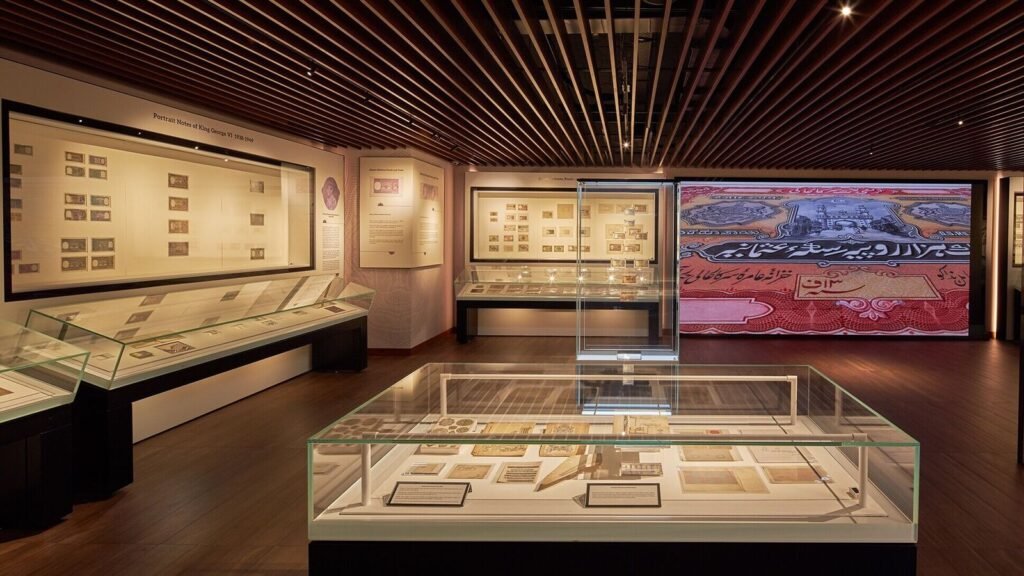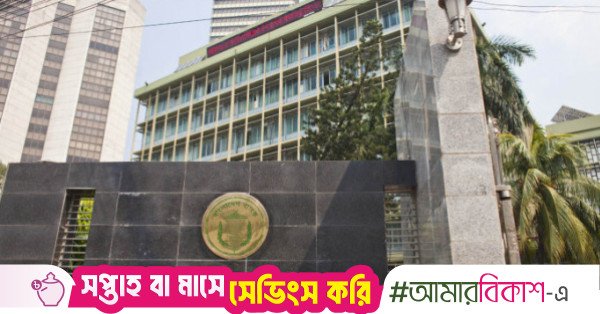WWI had a far-reaching effect on the global economy. Even the erstwhile princely states of India were not left untouched. The shortage of silver and gold resulted in the issuing of a lesser number of coins. In such a scenario, the royal states were unable to meet their monetary demands. 36 of these in the northwestern part of the subcontinent were given permission by the British Government to issue papertokensin 1917 instead of metallic coins. The only other princely state in the south-central part of India to have been allowed to do so was Hyderabad. Known as the ‘Rupya Sicca Osmania’, the currency, with denominations of ₹1 to 1000, was printed at Waterlow & Sons Ltd, London, and then shipped to Hyderabad. This continued till 1936. The vignettes and motifs on the notes tell their own story about the princely state. For instance, the ₹1000 Osmania note of Hyderabad from 1922 features a hand-made watercolour essay by Thomas de la Rue & Company, London, on the obverse. It also has a vignette of the Jama Masjid in Gulbarga, Karnataka, alluding to the vast expanse of the state.
Anecdotes and details such as these feature in an upcoming book on the currency of the princely state of Hyderabad between 1917 and 1955, authored by Rezwan Razack. In 2020, the Bengaluru-based numismatist and co-founder of the Prestige Group opened up his collection to currency aficionados across the world through the Museum of Indian Paper Money. Located on Brunton Road, this has come to be known among the locals as the ‘Rupee Museum’.
For 50 years now, the 70-year-old has pursued an interest in the history of paper money. To recognise his contribution to the field of numismatics and notaphily, or the collecting of paper money, the International Bank Note Society (IBNS) recently inducted him into the ‘Hall of Fame’, making him the first Asian to receive this recognition.

View Full Image
Though Razack has authored several books about the discipline, including the Revised Standard Reference Guide to Indian Paper Money in 2012 and One Rupee Hundred years 1917-2017, he feels that the upcoming book on Hyderabad has been his most challenging yet, given the fact that the information lies scattered and often behind layers of approvals. It has required a different rigour of research. But the stories that this effort has yielded has been worth it. He recounts the story of the sunken notes, when SS Egypt, carrying a vast shipment of gold and silver and ₹51 lakh worth of nizam’s currency printed in London, was sunk off the island of Ushant in northern France in 1922. 12 years later, a salvage team managed to find some of those notes, which were meant to travel from England to India. “Sadly, they were unsigned and could not be used. I have a note with the autograph of all the members of the salvage team,” he says.
Subsequently, the printing of new notes, with denominations of ₹‘5 to 1000, was entrusted to the Government of India Security Press, Nashik, in 1938. And after the princely state of Hyderabad was integrated into the Union of India, its currency ceased to be legal tender, 1 April 1955 onwards.
For decades now, Razack has devoted two to three hours of daily research to his passion. He has tried to unravel stories behind paper currency circulated in India from the 1800s to 2025. The earliest known bank note in his collection is from 5 September 1812 of atwo-hundred-and-fifty sicca rupees issued by the Bank of Bengal. “Irrespective of our language or region, currency unites us all. It touches all of our lives. Its history shows the way our country has moved through time,” he says.
The museum and books are his way of contemporising that history. “When I first started researching the stories of some of the notes, there was literally no access to any kind of material. I would go to the British Library, London, daily to look up the India records and make notes. That’s how the Revised Standard Reference Guide to Indian Paper Money came about,” he says. Razack also made trips to Lisbon and parts of France to find information on the currency introduced by French and Portuguese colonisers in India. “Sadly, there was very little cooperation from local authorities in India. They conveyed that the details were not documented in a manner to be shared with me,” he rues.
In the past 7-8 years, though, there has been a heartening shift. With the awareness created by the museum and the books, there has been a change in the way people perceive numismatics in the country. It is no longer considered merely an indulgent hobby but a serious discipline. Some people make the initial visit to the museum for the novelty of it, and then start engaging with the stories and the visual aesthetics of the notes even further. “Some of the youngsters have not handled paper money at all in their lifetime. They have grown up using UPI. For them, the money is on the phone. They have even outgrown the credit card. The notes on display at the museum and in the books offer a tangible connection with the evolution of paper money,” says Razack.
It is such connections between the past and the present that he seeks to make. According to Deepthi Sasidharan, museum heritage consultant and director, EkaArchiving Limited, for the youth and numismatist alike, there is nowhere else in the world that one can see such a collection of historically important and one-of-a-kind notes. “They are not just notes or paper currency, they define our commerce, our political history, our wealth and indeed now our nation. Banknotes offer the opportunity to study our history in a layered, informative, authentic way,” she says.
It was serendipity that led Razack towards a lifetime pursuit of numismatics. Nearly 50 years ago, while browsing through a safe at his ancestral home, he came across a set of Reserve Bank of India notes with the word, ‘Cancelled’, stamped on them. “Some of these included the portrait of King George VI and contained the words, “Pakistan Note Payment Refused”,” he had mentioned in a 2017-interview to Lounge about his then-upcoming museum. This kindled within him the curiosity to find out more about such notes.
He found that notes have not been the only form of paper currency used across the world. Another such form was the coupon used by the prisoners of war to purchase essentials from the canteen. “In Tiruchirappalli, several South African soldiers were brought in as POWs during the Second Boer War, which took place between 1899 to 1902. They first came to Sri Lanka and then were taken to India. Bengaluru saw a lot of Italian POWs following WWII. They were all given coupons instead of money so they would not be able to bribe the guards. These were offered as a form of remuneration for the work they did in the camps. They bought stamps and inland letters with those coupons,” elaborates Razack.
Today, for those like-minded individuals, who would like to further their interest in notaphily, he has started a research lab within the museum. Anyone can book an appointment and delve into the archive. “The idea is to shape a collective consciousness and create a different way of approaching history. I hope the books and the museum are a step in that direction,” he says.






